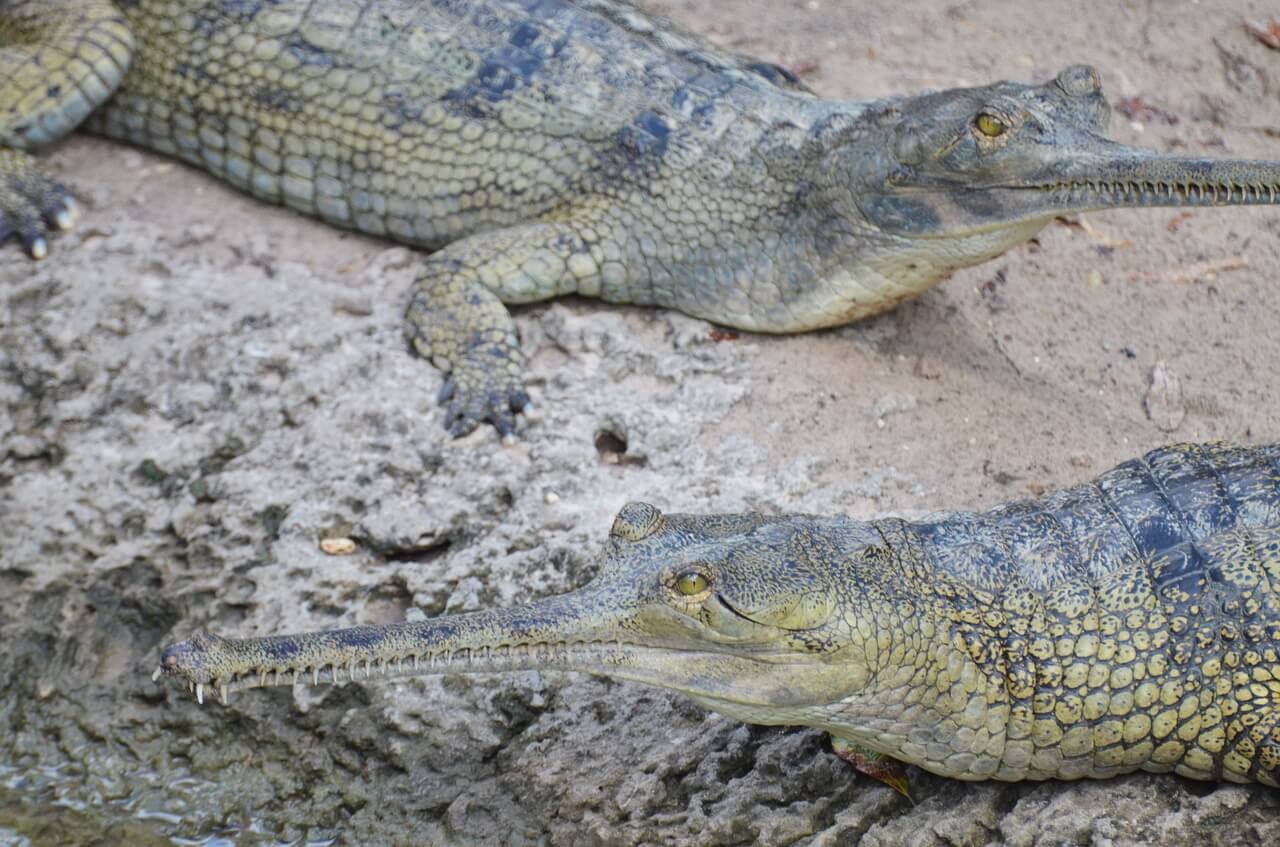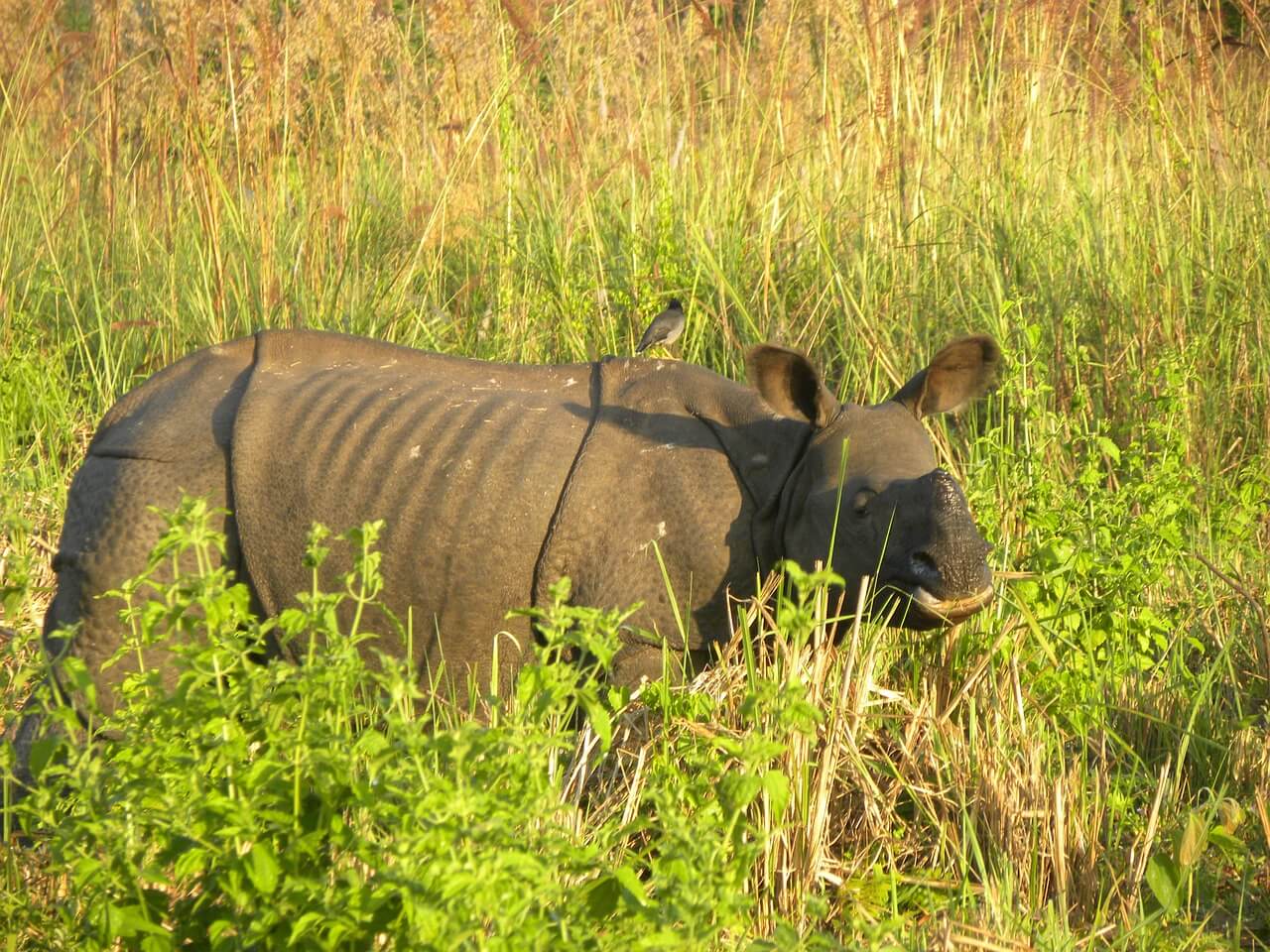Located in Nepal, Chitwan National Park is a wildlife lover’s dream. Scientists have documented more than 700 different animal species within the park’s borders, and many researchers believe that countless others still await discovery. Chitwan National Park isn’t the easiest wildlife preserve to reach, but those who are willing to undertake the long journey to get there will undoubtedly have the chance to see a variety of fascinating animal species.
We’ll discuss some of the most notable animals living in the park and provide a few wildlife-viewing tips to help you make the most of your Chitwan National Park adventure below.
Magnificent Mammals: From Bears to Monkeys to Tigers
Chitwan National Park hosts one of the most impressive collections of mammal species in the world.
There may be no better park in the world for mammal lovers to visit than Chitwan. Even if you have a relatively “disappointing” trip, you’ll still have the chance to see a wide variety of species.

The Bengal tiger is undoubtedly the park’s most impressive inhabitant, and it sits atop the local food chain. Leopards and clouded leopards also call the park home. Interestingly, this is one of the few forested areas in the world with three large cat species living side by side.
The unusual and interesting sloth bear also lives within Chitwan National Park. They’re relatively rarely seen, but lucky visitors occasionally get the opportunity to spot them. Indian rhinos also live within the park, as do Indian elephants. Four-horned antelopes, Rhesus monkeys, and Indian pangolins also inhabit the region.
The Birds of Nepal and Chitwan National Park
A diverse array of bird species live within this wildlife sanctuary.
Visitors are sure to see a variety of birds while visiting the park, given the sheer number of species residing there. In fact, scientists have documented more than 500 species within the park’s borders. And while this includes several common species, the most rewarding ones to see are the endangered and threatened species present.

One thing you’ll surely notice when visiting Chitwan is the different collections of bird species that live in different habitats. For example, Bengal florican, swamp francolin and several other species frequent the park’s grasslands. Grass warblers are also frequently seen in the grasslands, despite their dwindling numbers. The Oriental darter and several bitterns tend to hang out near the park’s lakes, as do storks and kingfishers.
The forests of the park also host a variety of bird species, but peafowl and jungle fowl are the most abundant and easy to see. Cuckoos and flycatchers are also common in the forests, although they spend their time in the trees, rather than on the forest floor.
Incredible Reptiles
A number of world-famous reptile species call Chitwan National Park home.
Although the mammals and birds of Chitwan National Park elicit most of the attention from visitors, you’ll want to be sure to make time to see the reptiles living in the park too. Chitwan National Park is home to a variety of fascinating species, and it is one of the best places in the world to see several in person.

Two very large snakes call the park home. This includes the harmless, but impressive Asian rock python, which occasionally reaches lengths in excess of 20 feet and feeds on large mammals of the forest. The infamous king cobra also calls Chitwan home. These snake-eating serpents are the largest venomous snakes in the world, and they occasionally grow up to 18 feet long.
Monitor lizards and starred tortoises are also park residents, as are two crocodilians. Mugger crocodiles are fairly typical crocodiles, who consume any prey they can catch, while the unusual and thin-snouted gharial is a fish-eating specialist.
Wildlife-Viewing Tips: Make the Most of Your Chitwan Adventure!
Wildlife may be abundant in Chitwan National Park, but you’ll see more species by employing the tips below.
It would be a shame to travel all the way to Nepal without seeing a variety of animal species, so try to employ the tips described below. Wildlife sightings are certainly never guaranteed, but it is always wise to give yourself the best chance possible to see a variety of species.
- Take advantage of the tour services provided. There are several tour services that provide guided hikes and safaris in the park. By joining one of these groups, you’ll have a better chance to see a variety of species than if you only explore on your own.
- Use insect repellents when visiting the park. A variety of biting flies and mosquito species are common in and around Chitwan National Park. Do yourself a favor and wear an effective insect repellent to help keep these biting bugs at bay. Not only will these insects irritate you during your visit, but some can also transmit dangerous diseases.
- Give yourself plenty of time. You’ll need more than a couple of days to see all of the wildlife Chitwan has to offer. And because it will take you a lot of time and effort to reach the park, you’ll want to be sure you stay for several days to make the most of your Chitwan adventure. Minimally, you should plan to spend three to five days exploring the park.
- Maximize the time spent exploring during the early morning and late afternoon. Like most other wild animals, the species living in Chitwan National Park are most active in the early morning and late afternoon hours. Accordingly, you’ll want to make sure you spend some time exploring the park during these low-light periods.

Tell Us About Your Experiences!
As you can surely tell by now, Chitwan National Park is one of the most amazing places a wildlife lover could have the chance to visit. If you were to only visit one national park in the world, Chitwan would definitely be deserving of serious consideration.
Have you ever been to Chitwan National Park? Tell us all about it! We’d love to hear about your adventure, as well as the animals you observed while you were there.














![Red Angus Closeup of a beautiful Red Angus cowPhoto by: U.S. Department of Agriculture [pubic domain]https://creativecommons.org/licenses/by/2.0/](https://animals.net/wp-content/uploads/2020/03/Red-Angus-4-100x75.jpg)

